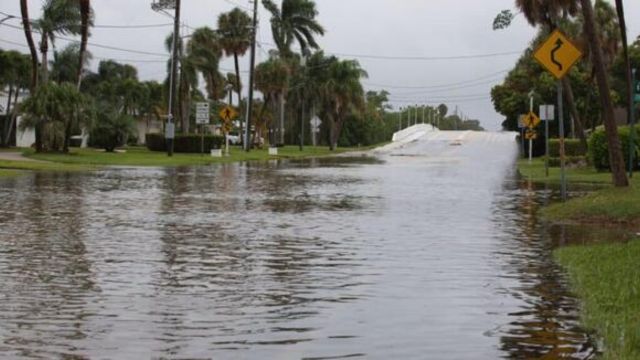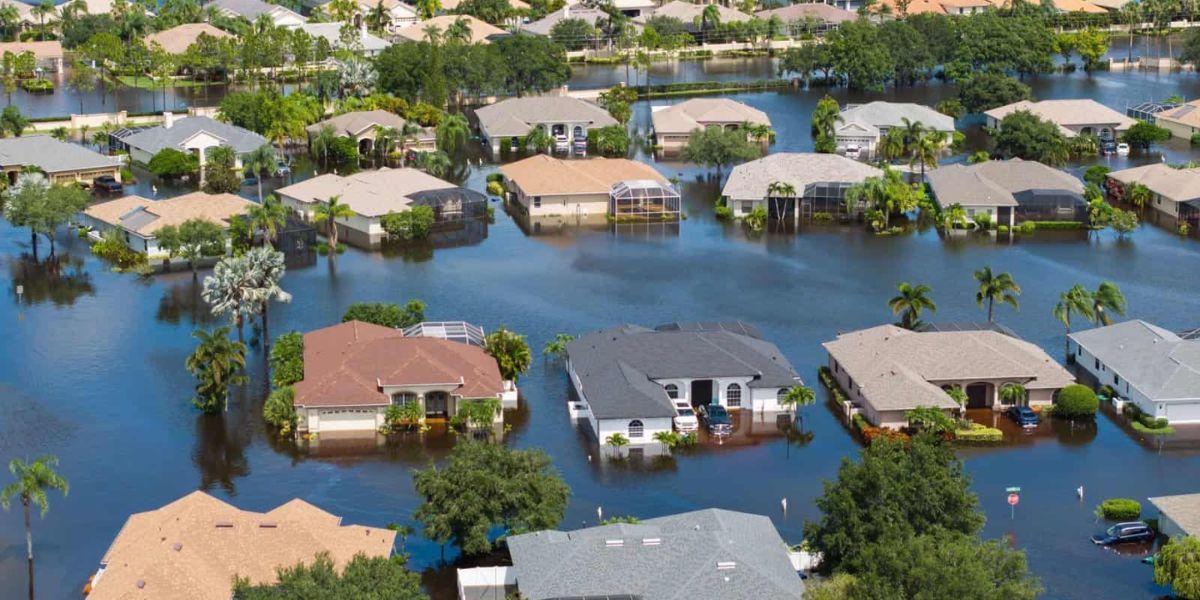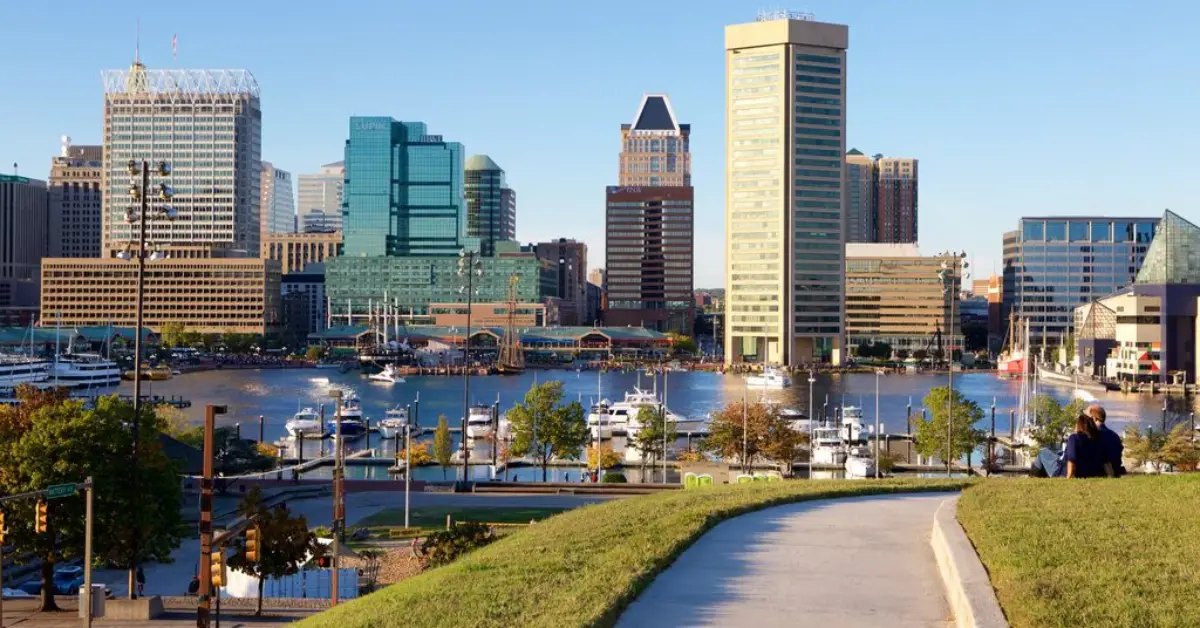MJP –
Many people still talk about global warming as a future problem, but the danger is here, and will only get worse with each passing season.
Rising sea levels pose an existential threat to many coastal communities in the US, from beloved beach towns to small islands to major cities that sit on a bay. These are areas that could face severe flooding or be partially underwater by 2030 based on current climate projections.
The year 2030 is a measly five years away at the time of writing this, so the disasters are approaching these communities quickly.
1. Miami Beach, Florida
It’s not surprising that much of the Florida coast is in trouble. By 2030, Miami Beach could see over 15% of its land area regularly flooded. Sea levels are projected to rise six to 12 inches, inundating low-lying neighborhoods and infrastructure.
Iconic South Beach areas may face frequent inundation, affecting tourism and local businesses. The city is already experiencing increased “sunny day” flooding during high tides, so this is closer in the future than many realize.
2. New Orleans, Louisiana
Mardi Gras may have to relocate in less than a decade. Parts of New Orleans are sinking at a rate of two inches per year. By 2030, up to 30% of the city could be underwater. Areas below sea level are at particular risk, with potential flood depths of three to six feet in some neighborhoods.
The French Quarter and other historic districts may require extensive flood protection measures. It would be awful to lose these iconic locations and structures which are part of the history of the United States, but that’s where we’re heading.
3. Atlantic City, New Jersey
We would not bet on Atlantic City surviving the severe floods that are coming. Rising seas and land subsidence put Atlantic City at high risk. By the time 2030 comes, over 20% of the city could face regular flooding up to two feet deep.
The iconic boardwalk and many casinos may be impacted. Flooding could significantly affect the city’s tourism-based economy and force major infrastructure adaptations. However, it’s in a slightly better spot than other places on this list.
4. Honolulu, Hawaii
Waikiki Beach and other low-lying areas of Honolulu face significant flood risks by 2030. Considering Hawaii is an island state, it’s not shocking that it’s in trouble and an urgent matter.

Sea levels could rise six to eight inches, leading to beach erosion and flooding in coastal neighborhoods up to one to two feet deep during high tides and storms. The city’s vital tourism industry may suffer as popular beaches disappear, and locals may watch their homes washed away by the waves.
5. Charleston, South Carolina
Charleston is expected to see over 180 flood events annually by 2030, a staggering number for residents. Sea levels may rise up to one foot, inundating historic areas and neighborhoods in this Southern city.
The picturesque destination could lose up to 25% of its habitable land to regular flooding. Adaptation efforts may need to balance preserving historic architecture with flood protection, as it’s not possible to save every building.
6. Norfolk, Virginia
Norfolk isn’t as well known as places like Charleston and Hilton Head, but it’s facing the same problems as those cities. Norfolk is sinking while sea levels rise, putting it at severe risk. By 2030, over 10% of the city could face chronic flooding up to three feet deep during high tides, engulfing homes and buildings.
Naval Station Norfolk, the world’s largest naval base, is particularly vulnerable. This could have significant implications for national security and the local economy, so this is not only a local concern.
7. Galveston, Texas

Galveston Island is subsiding while the seas rise. It’s estimated that before 2030, up to 15% of the island could be underwater. Storm surges may reach 15-20 feet above ground level.
The city’s seawall will likely be overtopped more frequently. The island’s role as a hurricane buffer for Houston may be compromised. And that means that after the sea swallows Galveston, Houston is likely next on the list.
8. Key West, Florida
Of course, the island communities mentioned on this list are in extreme danger, and that includes the beloved and beautiful Keys. The Florida Keys are extremely vulnerable to sea level rise. Experts expect that up to 30% of Key West could face regular tidal flooding one to two feet deep between 2030 and 2040 .
Many roads and buildings may become unusable during high tides. The unique ecosystem of the Keys, including coral reefs, may be severely impacted. People think of the Keys as an idyllic paradise, but it may soon be a hazardous and inhabitable place.
9. Annapolis, Maryland
Maryland’s capital faces significant flooding risks by 2030. Sea levels may rise six to eight inches, causing regular flooding in the historic downtown area. Up to 20% of the city could see floods one to three feet deep during severe high tides.
The U.S. Naval Academy and state government buildings may require extensive flood protection measures, and people will likely lose their homes and belongings. The serene and attractive Chesapeake Bay may soon swell and swallow the city, a nightmare for many.
10. Hoboken, New Jersey
Hoboken sits at a very low elevation on the Hudson River. Over 25% of the city could face regular flooding up to two feet deep by the year 2030. The city’s transit hubs and waterfront areas are particularly at risk.
Hoboken’s role as a commuter city for New York may be affected, potentially impacting regional transportation. While New York City is high enough above sea level that it should be safe for longer, the bustling city will feel the effects of flooding in nearby communities.
11. Boston, Massachusetts
3 Bay Area Cities Rank Among the Most Expensive in the U.S. for Renters
Boston’s coastal areas and filled-in land are vulnerable to flooding. Sea levels may rise six to 11 inches before 2030, putting 7% of the city at risk of regular flooding up to one and a half feet deep. Logan Airport and the Seaport District face particular challenges.
The city’s historic sites and major universities may also be impacted. While Boston has a slightly higher elevation than NYC, much of the city was built on reclaimed marshland, which will be greatly affected by storm surges.
12. St. Petersburg, Florida
Yes, another spot in Florida . The Sunshine State is among the most vulnerable US states as we face rising sea levels. St. Petersburg’s coastal location puts it at high risk. By 2030, up to 15% of the city could face regular tidal flooding as deep as one to two feet.
The downtown waterfront and coastal neighborhoods are most vulnerable. The city’s popular beaches and waterfront parks may require significant restoration efforts to remain viable. But, sadly, there is not much to be done in the long term, as we currently have no way of stopping the rising sea.
13. Hilton Head Island, South Carolina
This popular resort island faces severe erosion and flooding risks. It’s a luxury destination now but will be a disaster area by 2030. Up to 20% of the island could be underwater during high tides. Sea levels may rise six to eight inches but could go higher, threatening beaches, golf courses, and coastal homes.
The island’s tourism-based economy could suffer significant losses without major adaptation efforts. While this is a vacation destination for the wealthy, people also live here, and it would be tragic to lose this lovely location.
14. Atlantic Beach, North Carolina
As you can see, the Carolinas are very much at risk, almost as much as Florida. Atlantic Beach and other Outer Banks communities in North Carolina are highly vulnerable. By 2030, over 25% of the town could face regular flooding up to two feet deep, and it will only get worse from there.
Beach erosion and infrastructure damage are major concerns. The entire barrier island system may be at risk, potentially affecting mainland flood protection. The Outer Banks are famous for their natural beauty, outdoor fun, and historical significance, so it would be a major loss for North Carolina and the nation.
15. Tybee Island, Georgia
This is another barrier island at significant risk. It’s located near Savannah, Georgia. By 2030, it’s estimated that up to 30% of the island could be underwater when high tides come in. Sea levels may rise between six and eight inches, threatening homes, businesses, and the island’s only road access, cutting residents off from the rest of the state.
The island’s role in protecting Savannah from storm surges may be compromised. If the sea engulfs Tybee, Savannah will likely flood during a storm surge or high tide.




